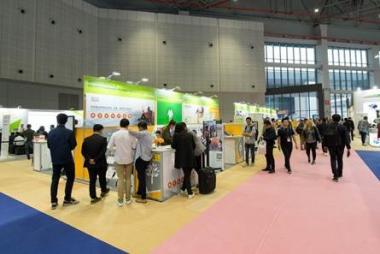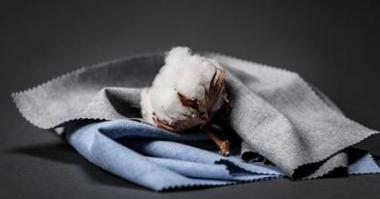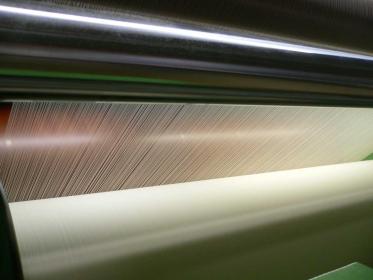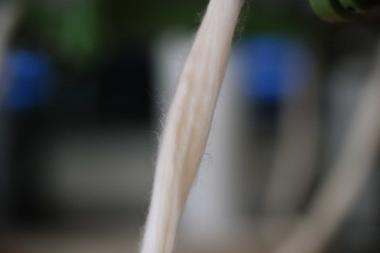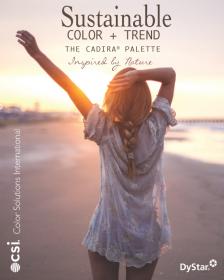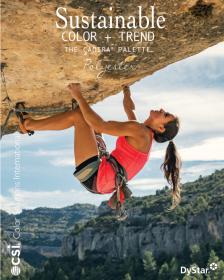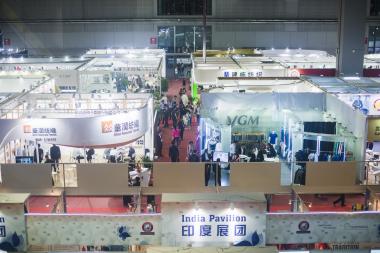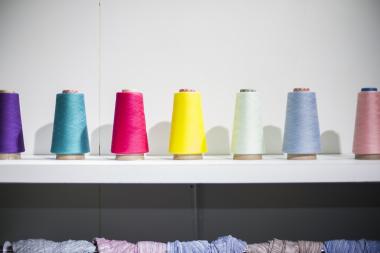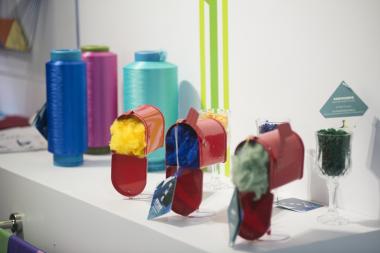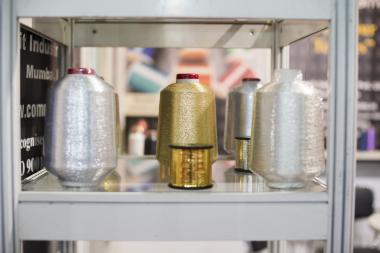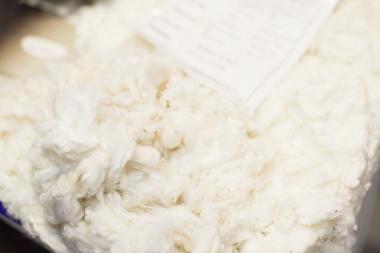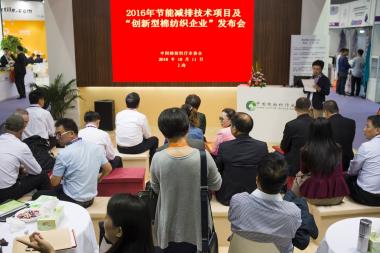European suppliers at Intertextile Shanghai the go-to option for Chinese buyers seeking quality and style
- New collaboration of sustainable viscose suppliers formed in China
Digital Printing Zone debuts at Spring Edition
Despite the economic ups and downs in China over the last few years, demand for premium European textiles remains high.
Whether it be premium wool for the flourishing suiting market, ladieswear fabrics, lace & embroidery for high-end domestic brands each with hundreds of stores across the country, innovative yarns & fabrics for the booming sports and activewear sectors, or original pattern designs for the thousands of new online fashion brands, European suppliers remain the go-to option for Chinese buyers looking for quality and style.
As one of the undisputed leaders in the European textile scene, Italy is always a good bellwether of the trends between Europe and China. After a less than stellar 2016, Italy’s fabric exports to the Mainland China and Hong Kong markets grew by 12.4% in the first 10 months of 2017[1]. The expected demand for European brands at Intertextile Shanghai Apparel Fabrics will be most evident in the SalonEurope zone, which features exhibitors from Austria, France, Germany, Italy, Spain, Switzerland, Turkey and the UK, as well as country pavilions & zones from France, Germany, Italy and Turkey.
There is also continuing demand for overseas expertise when it comes to more technical areas such as sustainability and digital printing, solutions to which can be found in the fair’s All About Sustainability area and Digital Printing Zone.
SalonEurope showcases the continent’s full textile expertise
The best of the best from Europe will be on display in this edition’s SalonEurope, with a range of products across the whole textile spectrum on offer. Some of the highlights this edition include:
- Alumo (Switzerland): celebrating its 100-year anniversary this July, Alumo has undertaken a complete refresh of their brand, highlighting the character of their mill in Appenzell, Switzerland that has deep roots in the local textile industry. This edition, they will showcase a renewed collection of luxury shirting fabrics with intricate designs and added functions such as natural stretch and wrinkle-free, and a newly enlarged, never-out-of-stock ‘Sartorial’ collection.
- Hatfil Tekstil Isletmeleri (Turkey): a Turkish-Italian joint venture, they offer a huge range of yarns including eco-friendly options such as organic, BCI and fair trade yarns, as well as cotton, Tencel, Amicor, bamboo, cashmere, modal and other varieties.
- Hohenstein Textile Testing (Germany): offering testing services, OEKO-TEX® services and certifications, the Hohenstein Quality Label and more.
- Ricamificio Paolo Italy SpA (Italy): an embroidery manufacturer, they have developed a new technique using very thin embroideries to produce a lace-like effect, which can also be customised to the customer’s requirements in no more than four weeks. They have also produced a quilt-like fabric suitable for spring / summer garments which is made from materials such as silk organdie, cotton yarn or lurex to produce a shiny effect.
- Teseo Tessitura Serica Di Olmeda SpA (Italy): for their summer 2019 collection, Teseo is inspired by the natural elements with increased attention to sustainability with GOTS-certified bio silk and eco-friendly yarns. New articles are lighter and enriched with yarn-dyes, include jacquard stripes and checks, gauze and devoré bands to add transparency, and more.
New collaboration of sustainable viscose suppliers formed in China
While the textile industry in China still has a long way to go in terms of sustainability, genuine progress is being made at both a government and company level. January of this year saw the implementation of a new environment protection tax, with companies charged for noise, air & water pollution and generating solid waste[2]. Replacing a pollutant discharge fee that had been in place for 40 years, the new tax is set by local governments – with some of the regions suffering from worse pollution setting higher rates – and also incentivises companies with lower emissions.
In another encouraging move, 10 leading global viscose producers in China have come together to form the Collaboration for Sustainable Development of Viscose (CV) to promote the sustainable sourcing and responsible production of viscose. These 10 producers collectively account for over 50% of the world’s viscose staple fibre production, and have partnered with two trade associations to adopt a sustainability roadmap for the viscose industry. Built around credible international sustainability standards and programmes, the CV Roadmap aims to provide guidance to viscose producers on sustainable sourcing and production practices.
The CV collaboration will make its debut appearance in the fair’s All About Sustainability zone, where visitors can learn more about this initiative, as well as sustainable developments in the Chinese textile industry. Apart from an educational programme and garment display area, the zone will also feature a number of exhibitors other than CV.
Digital Printing Zone debuts at Spring Edition
While digital printing is rapidly gaining traction in the global textile industry, this is especially so in China due to its potential to reduce pollution during the production process. Amongst the exhibitors looking to take advantage of this in the fair’s new Digital Printing Zone is MS Italy, a market leader in the design, development and distribution of innovative digital ink-jet printing systems and associated consumables, which serves the high-end, roll-to-roll textile printing and specialty material markets. Also exhibiting is DIGITEX which will introduce the latest digital- and inkjet-printed natural and manmade fabrics.
Apart from digital printing exhibitors, a day-long forum will inform fairgoers on the exciting possibilities of digital printing. Held on day 2 of the fair, the Fast Fashion and Digital Printing Application Forum features sessions on fast fashion technology & trends and digital printing applications. These are followed by a series of discussions on topics such as flexible supply chains, business opportunities created by digital printing and IP protection. The forum also includes a presentation on the findings of a six-month study conducted by Fashion Print, a Chinese publication, for which they visited hundreds of textile companies, printing and dyeing enterprises, as well as their suppliers to produce a research paper on the digital textile printing market and technology.
In addition to Intertextile Shanghai Apparel Fabrics, four other textile fairs also take place at the National Exhibition and Convention Center: Yarn Expo Spring, Intertextile Shanghai Home Textiles – Spring Edition, fashion garment fair CHIC and knitting fair PH Value.
- Intertextile Shanghai Apparel Fabrics – Spring Edition 2018 is co-organised by Messe Frankfurt (HK) Ltd; the Sub-Council of Textile Industry, CCPIT; and the China Textile Information Centre. For more details on this fair, please visit: www.intertextileapparel.com. To find out more about all Messe Frankfurt textile fairs worldwide, please visit: www.texpertise-network.com.
[1] http://hk.fashionnetwork.com/news/Italian-textile-industry-back-on-growth-track-in-2017,944760.html
[2] http://www.fibre2fashion.com/news/textile-news/china-imposes-environment-protection-tax-beginning-jan-1-239965-newsdetails.html
Liam Rodden, Messe Frankfurt (HK)


